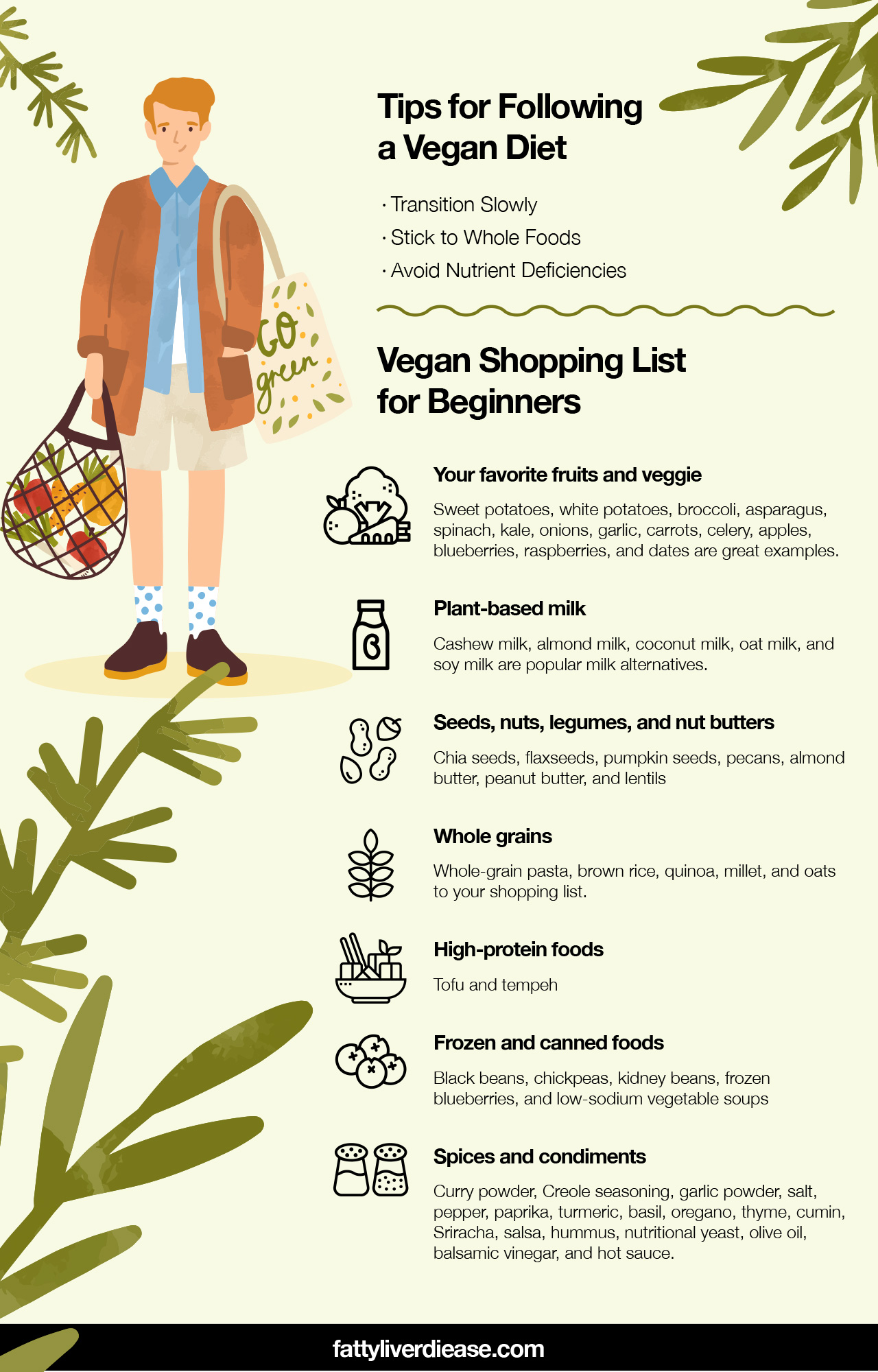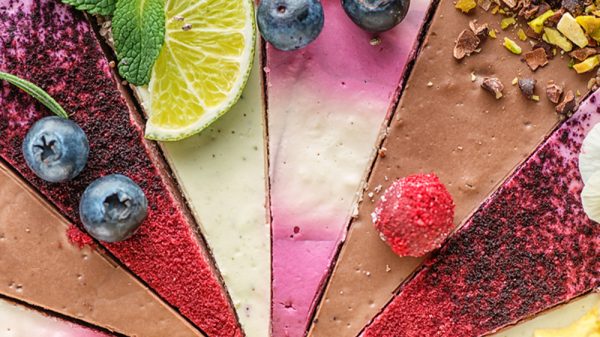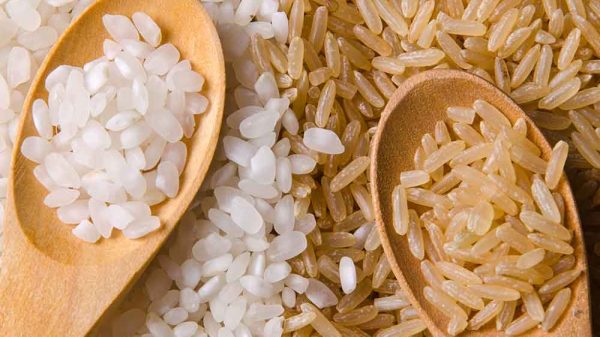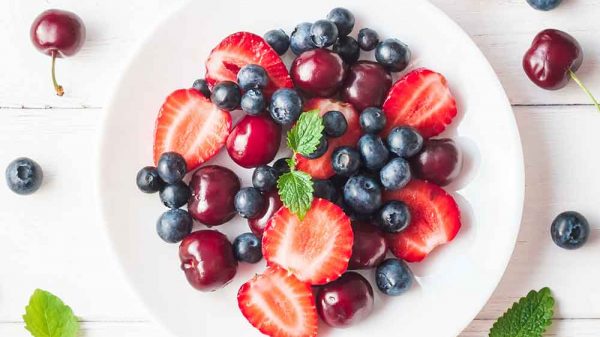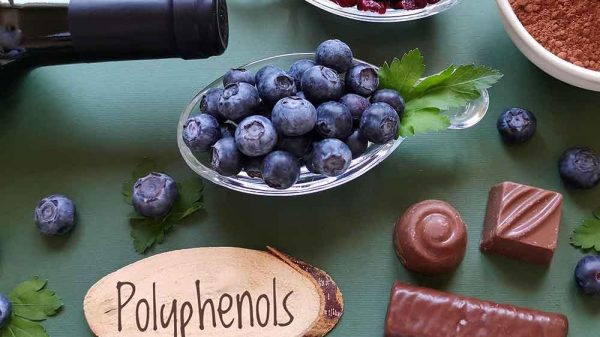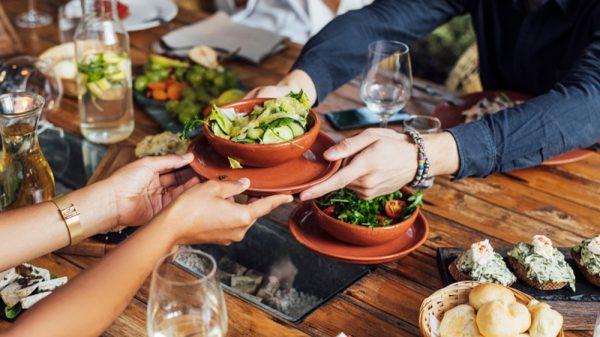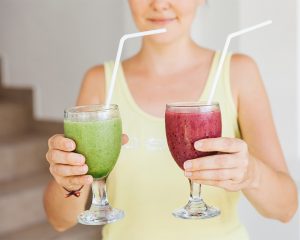Starting a new diet can be a daunting task. What kind of recipes should you make, and what will your shopping list look like? If you’re feeling overwhelmed, that’s completely normal. Here we go through everything you need to know about how to go vegan for beginners.
Keep reading for the complete beginner’s guide to veganism, including simple vegan recipes for beginners, vegan shopping lists, and other tips.
What Exactly Is a Vegan Diet?
Before we get into vegan meal ideas, shopping lists, and other tips, let’s first talk about what it means to follow a vegan diet.
Veganism is a way of eating that excludes all animal products and instead focuses on the intake of fruits, veggies, beans, nuts, seeds, whole grains, and soy products like tofu and tempeh. Vegans avoid all meat products like chicken, fish, and beef. The vegan diet offers numerous health benefits. Eating primarily plant-based foods supports weight loss and reduces the risk of heart disease, type 2 diabetes, high cholesterol, and fatty liver disease.
Do vegans eat eggs, or do vegans eat cheese? Because eggs and cheese come from animal products, vegans do not consume these products. The vegan diet also excludes cow’s milk, yogurt, sour cream, ice cream, butter, and other similar products. Luckily, there are delicious vegan alternatives to these foods, so you don’t necessarily have to give up all of these foods altogether.
Some individuals describe veganism as a lifestyle, which means choosing to avoid all products in general that involve animals or animal testing.
Vegan Meal Ideas for Beginners
Here are a few examples of vegan recipes for beginners that you can use that help make transitioning to veganism easier.
- Burritos: Burritos make an easy vegan meal and can be enjoyed for lunch or dinner. Plus, they are so tasty that meat-eaters and non-vegans will enjoy them! Prepare sauteed veggies, including onions, garlic, bell peppers, jalapeno peppers, zucchini, kale, and cabbage. Add black beans and your favorite burrito seasoning. Fill a whole-grain tortilla with brown rice and your veggies and beans. Top with salsa, hot sauce, avocado, lime juice, and cilantro. You can also use the same ingredients and flavors for tacos.
- Chia seed pudding: Chia seed pudding is a high-protein vegan breakfast that is easy to throw together. Simply soak whole chia seeds in plant-based milk overnight. Top with your favorite fruits and a drizzle of maple syrup.
- Veggie stir-fry: Veggie stir fry is an easy and nutritious dinner. Saute firm tofu, onions, carrots, garlic, snow peas, broccoli, and bell peppers in a pan. Season with curry, turmeric, coconut milk, lemongrass, and ginger. Enjoy plain for a low-carb meal, or serve over brown rice.
Vegan Shopping List for Beginners
New vegans may be overwhelmed by the vegan options in the grocery store. Here we narrow down your list to staple items to have in your pantry and fridge at all times.
- Your favorite fruits and veggies: Keeping your pantry and fridge stocked with produce is important to ensure you always have some fruits and veggies available to incorporate into your meals. Sweet potatoes, white potatoes, broccoli, asparagus, spinach, kale, onions, garlic, carrots, celery, apples, blueberries, raspberries, and dates are great examples.
- Plant-based milk: Keep your favorite plant-based milk on hand to use in smoothies, cereal, coffee, and baking recipes. Many vegan milk substitutes can be kept in the pantry until they are opened. Cashew milk, almond milk, coconut milk, oat milk, and soy milk are popular milk alternatives.
- Seeds, nuts, legumes, and nut butters: Seeds, nuts, legumes, and nut butters are important protein sources on a vegan diet. They are also rich in healthy monounsaturated fats and polyunsaturated fats. Add foods like chia seeds, flaxseeds, pumpkin seeds, pecans, almond butter, peanut butter, and lentils to your shopping list.
- Whole grains: Whole grains are staple items on the vegan diet. Add foods like whole-grain pasta, brown rice, quinoa, millet, and oats to your shopping list.
- High-protein foods: Tofu and tempeh are very high-protein foods on the vegan diet and are made of soy protein. Seitan is another high-protein option. Keep in mind that seitan is made of wheat gluten and should be avoided if you’re following a gluten-free diet.
- Frozen and canned foods: When you’re in a pinch, having frozen and canned food items can help you prepare dinner quickly. Black beans, chickpeas, kidney beans, frozen blueberries, and low-sodium vegetable soups are convenient vegan foods to have on hand.
- Spices and condiments: Seasoning is the key to making vegan foods taste good. Always make sure your spice cabinet and fridge are stocked with items like curry powder, Creole seasoning, garlic powder, salt, pepper, paprika, turmeric, basil, oregano, thyme, cumin, Sriracha, salsa, hummus, nutritional yeast, olive oil, balsamic vinegar, and hot sauce.
- Processed foods: Processed vegan foods include vegan alternatives for ice cream, chicken nuggets, sausage, and cheese. These foods should make up only a small proportion of your cart when you are grocery shopping.
Tips for Following a Vegan Diet
Here are a few key tips that can help you transition successfully to a vegan diet.
1. Transition Slowly
If you are an omnivore, it can be tough to cut out all animal products immediately. Instead, aim to transition gradually to a vegan diet that works for you. Some individuals find it helpful to first transition to a vegetarian meal plan, before eating only plant-based foods.
2. Stick to Whole Foods
When following a vegan diet, stick primarily to whole, unprocessed foods like fruits, veggies, whole grains, nuts, seeds, and beans. Not only are whole foods better for you, but they are also less expensive. When shopping, buy mostly whole foods and a smaller proportion of vegan alternatives like snack bars, vegan cheese, and vegan meat substitutes.
3. Avoid Nutrient Deficiencies
Becoming vegan may increase your risk of deficiency of certain nutrients, like vitamin D, calcium, and vitamin B12. If you are considering going vegan, talk to your doctor or registered dietitian about options for supplementation.
It’s also important to ensure that you get optimal ratios of essential amino acids on the vegan diet. Strive to eat a variety of nuts, seeds, whole grains, beans, and soy products to ensure that you’re getting the essential amino acids that your body needs to support the synthesis of muscle tissue, hormones, and enzymes.
How to Go Vegan for Beginners: Conclusion
If you’re new to the vegan journey, don’t worry. You’ll get the hang of it in no time! Now that you’re equipped with a vegan shopping list, meal ideas, and tips, you can begin your transition to a plant-based diet. Take your time and make sure you adapt the vegan diet to fit your specific needs. Most of all, have fun creating a new meal plan and experimenting with fresh foods and flavors.
